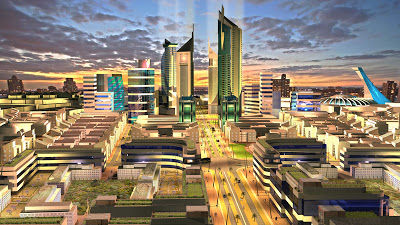From Silicon Savannah to Ushahidi: Technological Determinism or Real Opportunity?
At best, it could increase democratic participation, accountability, transparency, quality and speed of government delivery.
At worst, it is unaffordable, inaccessible, could be controlled or entirely hijacked by a central government and make everything quite a bit worse: e-governance or the application of electronic means in the interaction between the government and its citizens and internal government operations.
Ranging from G2C (Government to Citizens), G2B (Government to Businesses) and G2E (Government to Employees) to G2G (Government to Governments) and C2G (Citizens to Governments), this world of acronyms aims at informing, representing, consulting, involving and encouraging citizens. The United Nations—along with numerous other international organizations and governments—has embraced e-government. In 2012, for instance, the UN Department of Economic and Social Affairs proclaimed that “new technologies can be used to advance sustainable development for all people across the world while including them in the process” and ranked its 191 member states by its telecommunications infrastructure and human resource endowment in a so-called e-Government Readiness Index. The Republic of Korea ranked #1, while Kenya placed as #119 and Somalia at the very bottom.
At the risk of being named a technological determinist and victim of my tech-obsessed generation, I believe that in the case of Kenya, it would be a grave mistake to ignore Information and Communications Technologies when drafting any national policy, especially a National Slum Upgrading and Prevention Policy.
There are several reasons for this.
Firstly, the Kenyan government has launched several innovative projects or ideas, including a pilot project by the Information Technology Standards Association of Kenya. As one of the first e-governance programs and in an attempt to increase public awareness and participation in the fight against corruption, this program collected source points in form of corruption reports sent by citizens through an Internet hotline and routed those to the Electronic Graft management Center. The center, in turn, filtered the information before channelling it to the Anti-Corruption Authority for action. To increase participation, existing Internet cafes were made available free-of-charge to send corruption reports. Moreover, youth volunteers and news media outlets were recruited to raise awareness of the service.
Another noteworthy government initiative is the Connected Kenya 2017, a 5-year national ICT Masterplan, adopted earlier this year. As part of Vision 2030, this policy plan is supposed to turn Kenya into “Africa’s most globally respected knowledge economy” by 2017. Under three main pillars, the plan outlines the achievement of ambitious goals such as centralized affordable cloud services and the development of Konza Technology City that is supposed to promote Kenya as a Silicon Savannah over the course of the next 20 years.

An artist’s imagination of Konza City. Source: http://www.mwakilishi.com/sites/default/files/Konza4.jpg.
Finally, and possibly most exciting among government initiatives, is the Kenyan Government’s open data website, launched in 2011 by President Mwai Kibaki. This pretty comprehensive portal draws data from the Ministry of Finance, Planning, Health, Education and Kenya National Bureau of Statistics. While it does not yield too much information about informal settlements, it provides formal information on six main sectors: education, energy, health, water, sanitation, population and poverty.
Besides government initiatives, Kenya has also been at the forefront of alternative communications and value exchange platforms. Ushahidi, for example, is an open-source mapping system that resulted from a lack of information flow during Kenya’s 2007-2008 post-election violence. During a time period when Kenyans in certain parts of the country did not know whether it was safe or not to step outside their house, this alternative news platform mapped crime reports to assess the local situation better. This “politics of witnessing” has become notorious and has since spread as a crisis-mapping tool all over the world.

Mapping riots, deaths, property loss, government forces, civilians, looting, rape, peace efforts and internally displaced people during the 2007-2008 post-election violence in Kenya. Source: http://legacy.ushahidi.com/.
Kenya has also witnessed the world’s fastest uptake of mobile phone-enabled systems for value transfer and storage. According to the World Bank, 93% of Kenyans use mobile phones and 73% are M-PESA customers, a mobile banking application of local telecommunications company Safaricom. In 2011, an incredible 25% of Kenya’s GDP moved through M-PESA.
It is true that technology and open data offers opportunity for citizens’ input and feedback. So-called “big data” could also increase the state’s power to track taxes and criminal and terrorist activity for law enforcement purposes. But—and this is a big but—given the centralized power node of mobile banking and associated data, it is also possible that autocratic leaderships with access to “big data” could easily cease control over a population. Kenya’s post-election period, for example, witnessed political mobilization organized through text messages. After blocking services that could send large volumes of messages, the Kenyan unity government worked in close cooperation of mobile phone operators to compile a prosecution list of 1,700 phone users who had written or forwarded inciting text messages. They did not “use it;” nobody was harmed for sending text messages. But the list exists–somewhere.
So can citizens be users and co-producers of public services and should we include technology in Kenya’s National Slum Upgrading and Prevention Policy?
I could answer with a straight “yes” and out myself, yet again, as a hopeless idealist.
Or I could answer this question with another one: If technology does not contribute to a better life in some way, why do some of the poorest individuals in the world pay large sums of money—at times up to 50% of their disposable income—for a mobile phone?



